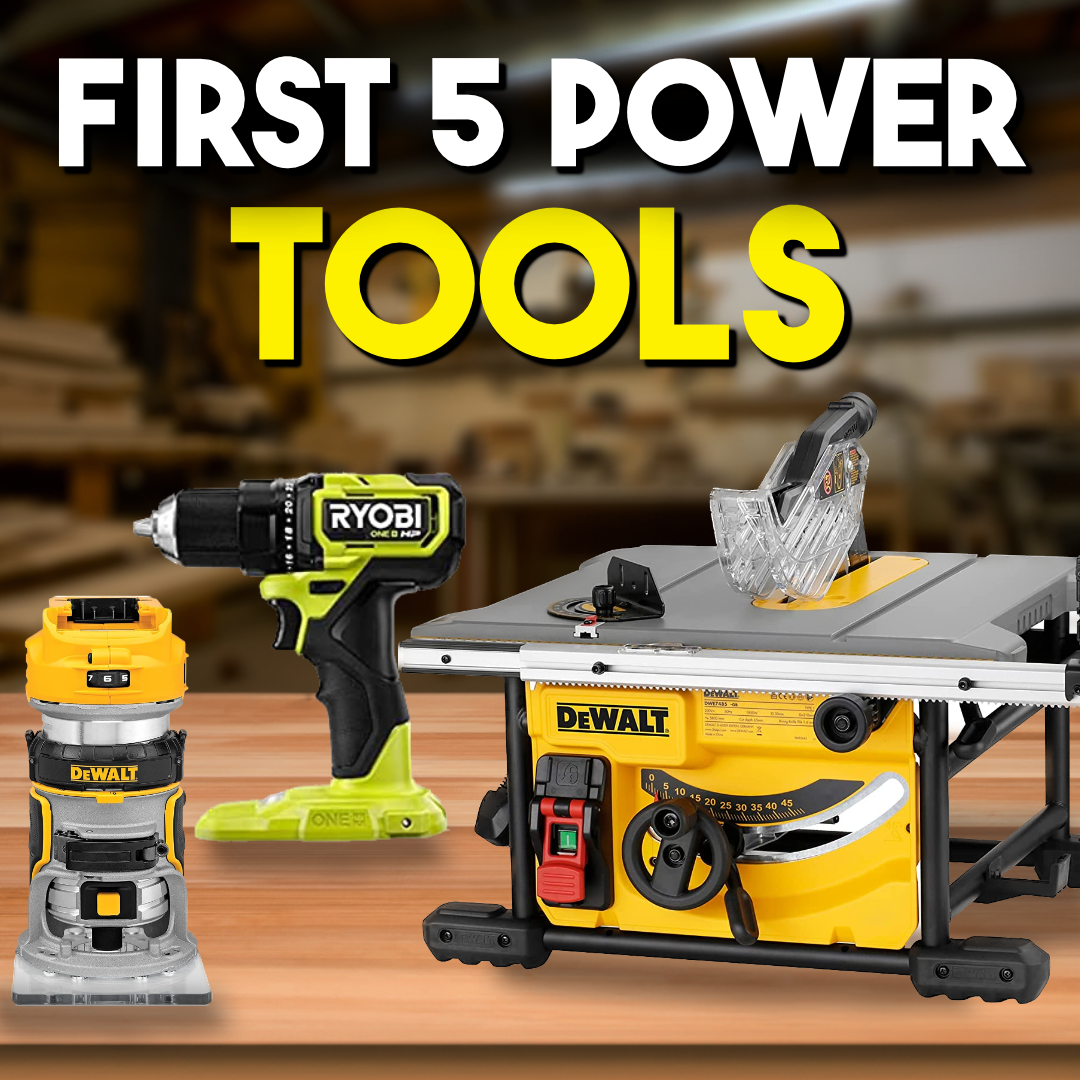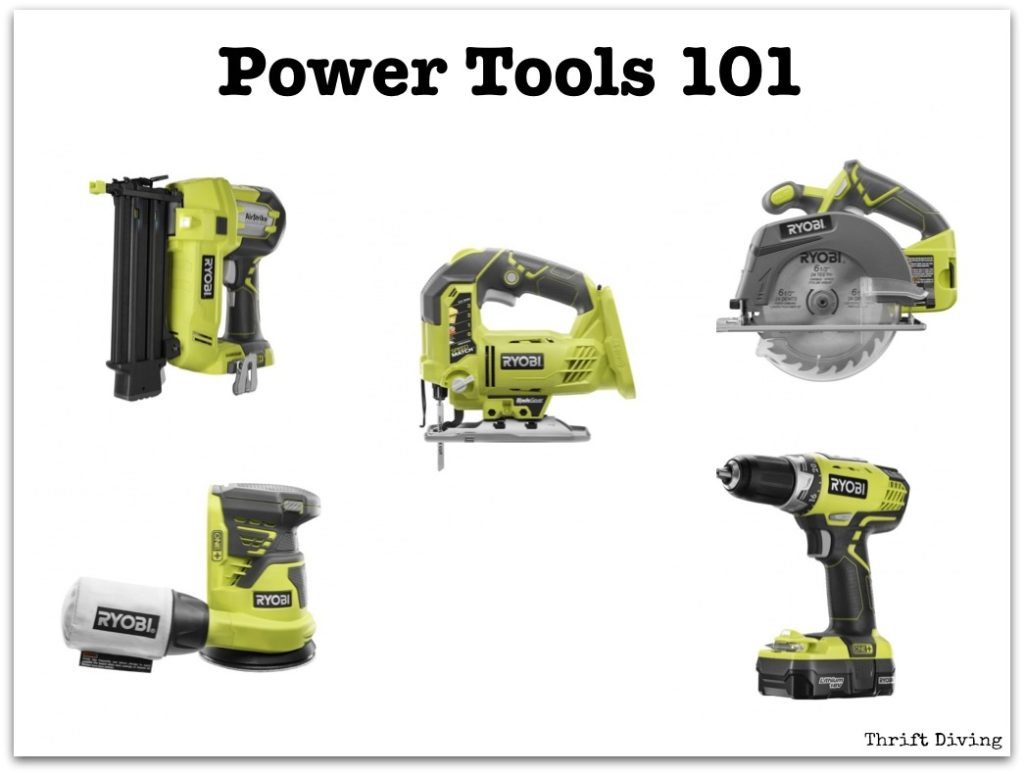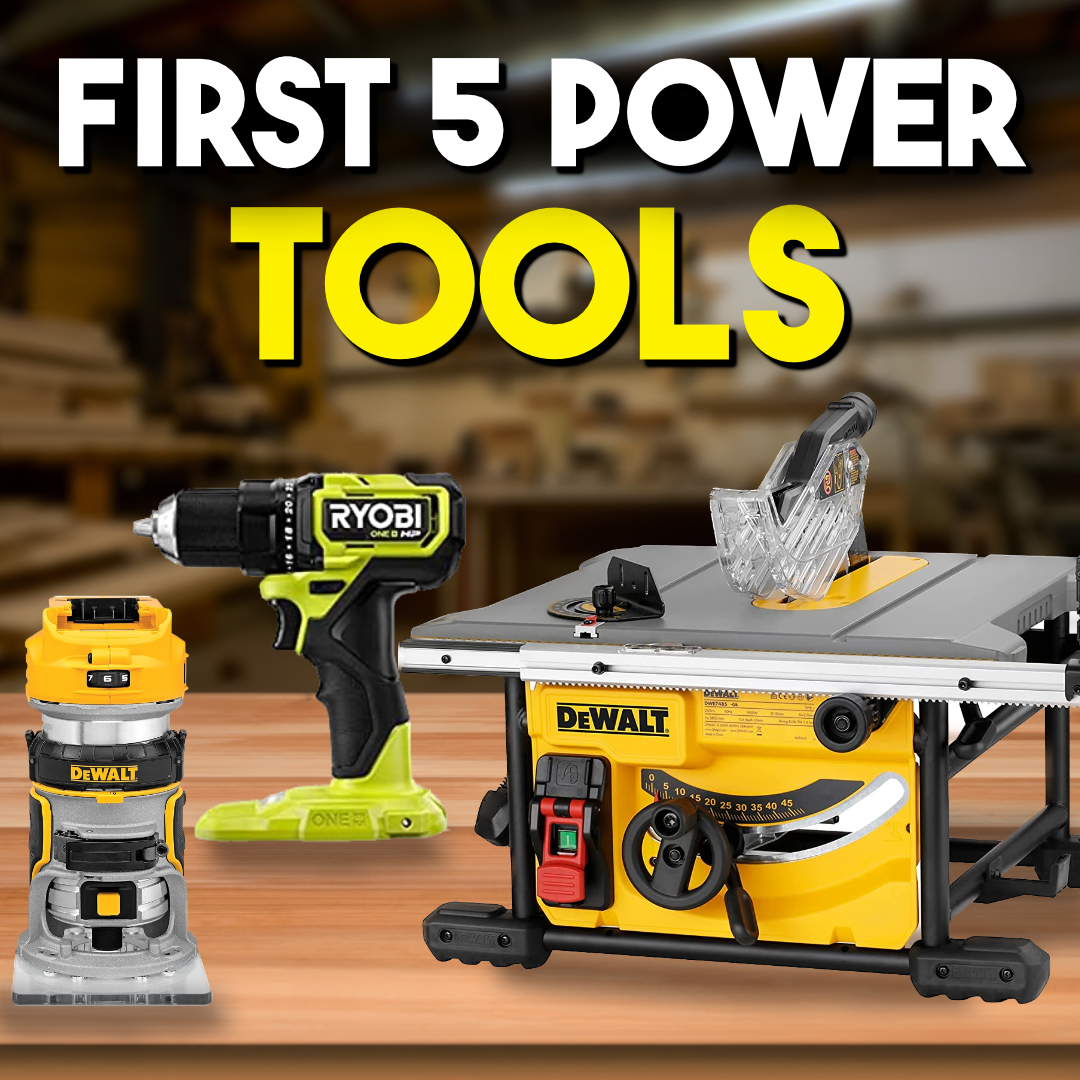Are you ready to dive into the world of power tools? Wondering which ones you should get your hands on first? Well, look no further! In this article, we’ll explore the exciting realm of power tools and help you figure out which ones are the best to start with. So, whether you’re a budding DIY enthusiast or a curious beginner, let’s uncover the essential power tools to kickstart your projects!
When it comes to starting your power tool collection, the choices can feel overwhelming. With so many options out there, it’s easy to get lost in a sea of tools and gadgetry. But fear not, we’re here to guide you through the maze and help you make the right choices. We’ll break down the must-have power tools that will empower you to tackle a wide range of tasks with confidence and ease. Ready to unleash your inner craftsman or craftswoman? Let’s get started!
Imagine yourself effortlessly drilling holes, driving screws, and shaping materials to create something amazing. That’s the power of having the right tools in your arsenal! In this article, we’ll explore the top power tools that every beginner should consider. From versatile drills to versatile saws, we’ll help you understand the benefits of each tool and why they’re indispensable for anyone looking to embark on their DIY journey. Get ready to discover the power of power tools and unleash your creative potential! Let’s dive in!
If you’re new to DIY projects, choosing the right power tools can be overwhelming. Start with these essential tools to kickstart your collection:
- A cordless drill: perfect for drilling holes and driving screws.
- A circular saw: great for cutting straight lines in various materials.
- A jigsaw: essential for cutting curves and intricate shapes.
- A random orbital sander: ideal for smoothing surfaces before painting or staining.
- A reciprocating saw: versatile tool for demolition and cutting in tight spaces.
Investing in these power tools will equip you for a wide range of projects, making them the perfect starting point for any DIY enthusiast!

Which Power Tools to Buy First?
Welcome to our comprehensive guide on which power tools to buy first! Whether you’re a DIY enthusiast or a professional tradesperson, having the right power tools in your arsenal is essential. In this article, we’ll walk you through the must-have power tools that every toolbox should include. From drills to saws, we’ve got you covered. So let’s dive in and find out which power tools you should prioritize!
Types of Power Tools
Before we delve into the specific power tools you should consider purchasing, let’s take a moment to discuss the different types of power tools available. Power tools can be broadly classified into several categories:
1. Drills
Drills are a fundamental power tool for any toolbox. They are versatile and can be used for a wide range of tasks, from drilling holes to driving screws. Corded drills provide consistent power, while cordless drills offer portability. Consider getting a drill with adjustable speeds and a range of drill bits for different materials.
When choosing a drill, consider its power (measured in volts), chuck size, and the presence of features like variable speed control or a hammer function for masonry work. The right drill will depend on your specific needs and budget.
In addition to a drill, investing in a set of high-quality drill bits, including ones designed for metal, wood, and masonry, is a wise choice.
2. Saws
Saws are essential for cutting through various materials, including wood, metal, and plastic. The two primary types of saws to consider are:
a) Circular Saw: A circular saw is versatile and ideal for making straight and angled cuts. Look for a circular saw with a comfortable grip, adjustable depth settings, and a powerful motor.
b) Jigsaw: Jigsaws are perfect for making curved cuts or intricate designs. Opt for a jigsaw with variable speed settings and a robust blade-changing mechanism for maximum efficiency.
Having both a circular saw and a jigsaw in your toolkit will give you versatility in tackling different projects.
3. Sanders
Sanders are essential for achieving a smooth and polished finish on various surfaces. Common types of sanders include:
a) Random Orbital Sander: This versatile sander can be used for both rough and fine sanding. Choose a random orbital sander with variable speed control and a dust collection system to minimize mess.
b) Belt Sander: A belt sander is ideal for quick material removal and heavy-duty sanding. Look for a belt sander with adjustable speed and a large sanding surface for faster results.
Having at least one sander in your toolkit will save you time and effort when it comes to achieving a polished finish on your projects.
4. Nail Guns
Nail guns are a game-changer when it comes to fastening tasks. They save you from using a hammer and nails manually, providing convenience and efficiency. There are different types of nail guns for specific applications:
a) Brad Nailer: A brad nailer is perfect for delicate trim work and attaching thin pieces of wood. It uses small and narrow brad nails that leave minimal damage to the surface.
b) Framing Nailer: A framing nailer is designed for heavy-duty tasks like framing, decking, and installing subflooring. It uses larger nails and provides the power needed for these demanding projects.
Investing in a nail gun will significantly speed up your projects, especially if you frequently work with wood.
Making the Right Choices
Now that we’ve covered some of the must-have power tools, it’s crucial to consider a few factors before making a purchase:
5. Budget
Start by determining your budget for power tools. While it’s tempting to buy the most expensive tools, it’s essential to strike a balance between quality and affordability. Research different brands and read reviews to ensure you’re getting the best value for your money.
6. Project Requirements
Consider the types of projects you’ll be working on most frequently. If you primarily work with wood, investing in tools like a circular saw and a brad nailer makes sense. On the other hand, if you’re more into metalwork, a good-quality drill and a grinder will come in handy.
7. Power Source
Decide between corded and cordless power tools based on your needs. Corded tools generally deliver more consistent power but limit your mobility. Cordless tools, on the other hand, provide greater portability but require frequent recharging or battery replacement.
Conclusion
Choosing the right power tools for your projects is crucial for achieving quality results and working efficiently. By prioritizing essentials like drills, saws, sanders, and nail guns, you’ll be well-equipped to tackle a wide range of tasks. Remember to consider your budget, project requirements, and power source when making purchasing decisions. So go ahead and start building your power tool collection, and let your creativity shine!
Key Takeaways: Which Power Tools to Buy First?
- Consider buying a drill for basic tasks like drilling holes and driving screws.
- A circular saw is versatile and essential for cutting wood and other materials.
- A jigsaw is great for detailed cuts and curved shapes.
- A random orbital sander is useful for smoothing surfaces.
- Invest in a cordless drill for added convenience and portability.
Frequently Asked Questions
When it comes to buying power tools, it can be overwhelming to know where to start. To help you navigate your choices, we have compiled answers to some of the most common questions about which power tools to buy first.
What are the essential power tools every homeowner should have?
For most homeowners, a drill/driver, a circular saw, and a jigsaw are great power tools to start with. A drill/driver is versatile and can handle a wide range of tasks, while a circular saw is perfect for cutting lumber and plywood. A jigsaw comes in handy for making curved cuts and intricate designs.
By having these three power tools, you’ll be equipped to handle a variety of projects around the house, from building shelves to completing small woodworking tasks.
Should I go corded or cordless when buying my first power tools?
The choice between corded and cordless power tools depends on your specific needs. Corded tools are generally more powerful and do not require recharging, making them ideal for heavy-duty tasks. On the other hand, cordless tools offer greater mobility and convenience, especially for projects without nearby power outlets.
If you plan to work mainly inside your home or have easy access to power outlets, corded tools might be the better option. If you value portability and freedom of movement, cordless tools are a great choice. Consider your needs and preferences before making a decision.
Are budget power tools worth considering for beginners?
When you’re just starting, budget power tools can be a reasonable option. While they may not offer the same durability and features as their higher-end counterparts, they can still get the job done for smaller projects. It’s important to keep in mind that budget tools might not last as long under heavy usage, so they may not be suitable for professionals or frequent use.
If you’re a beginner or have occasional projects around the house, budget power tools can be a cost-effective choice that allows you to learn and practice without breaking the bank. As you gain more experience, you can consider upgrading to higher-quality tools.
What safety precautions should I take when using power tools?
When using power tools, safety should always be a top priority. Start by wearing appropriate protective gear, such as safety glasses, earplugs, and gloves. Familiarize yourself with the tool’s manual and follow all the recommended safety guidelines.
Ensure your workspace is well-lit and free of any potential hazards. Use clamps or other stability measures when working with materials to prevent them from moving unexpectedly. Additionally, always disconnect the power source before making any adjustments or changing blades or bits. And never leave a power tool unattended while it’s running.
How can I maintain and prolong the lifespan of my power tools?
Proper maintenance is crucial to extend the lifespan of your power tools. Regularly clean the tools and remove any debris or dust that may accumulate. Keep the blades sharp and lubricate the moving parts as recommended by the manufacturer.
Store the power tools in a dry and secure place when not in use to prevent damage. Avoid exposing them to extreme temperatures or humidity. Follow the manufacturer’s guidelines for battery maintenance and charging to maximize their lifespan. Taking good care of your power tools will ensure they continue to perform well and last for years to come.

The First 5 Power Tools Every Beginner Woodworker Should Buy
Summary
So, which power tools should you buy first? It really depends on what you need to do. If you’re just starting out, a drill and a circular saw are versatile and useful for many projects. As you gain more experience, you can add other tools like a jigsaw or a sander to your collection. It’s important to prioritize safety and choose tools that are appropriate for your skill level. Remember to research and read reviews before making any purchases. Happy tool shopping!
In conclusion, start with the basics like a drill and a circular saw, then gradually expand your collection based on your needs and experience. Don’t forget to prioritize safety! Happy DIY-ing!
